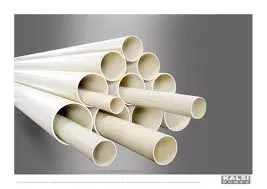Nov . 03, 2024 12:28 Back to list
ppr polypropylene pipe product
Understanding PPR Polypropylene Pipe Products
Polypropylene Random Copolymer (PPR) pipes have emerged as one of the most versatile and widely used piping materials in various applications. Known for their exceptional durability and excellent chemical resistance, PPR pipes are gaining popularity in both residential and industrial settings. This article delves into the characteristics, advantages, and applications of PPR polypropylene pipe products.
What is PPR?
PPR stands for Polypropylene Random Copolymer, a type of thermoplastic that is known for its strength, lightweight properties, and flexibility. PPR pipes are manufactured through a process that copolymerizes propylene with ethylene, resulting in a robust material that is resistant to temperature variations and provides a smooth inner surface for fluid transport.
Key Advantages of PPR Pipes
1. Durability PPR pipes are highly resistant to impact and stress. They can withstand high pressure, making them suitable for various applications, including hot and cold water distribution.
2. Chemical Resistance One of the primary benefits of PPR pipes is their ability to resist chemical corrosion. They can handle a wide range of chemicals, making them ideal for industrial applications where exposure to aggressive substances is common.
3. Temperature Resistance PPR pipes can operate efficiently in a temperature range of -20°C to 95°C, which is essential for plumbing systems that transport hot water. Their stability helps prevent deformities and breakdowns over time.
ppr polypropylene pipe product

4. Lightweight and Easy to Install Compared to metal pipes, PPR pipes are much lighter, which simplifies transportation and installation. Their ease of handling reduces labor costs and time during installation.
5. Long Lifespan With a typical lifespan of over 50 years, PPR pipes prove to be a cost-effective solution. Their resistance to rust and scaling also contributes to their longevity, reducing the need for frequent replacements.
6. Environmental Friendliness PPR pipes are recyclable and contribute to lower energy consumption during production compared to traditional materials. Their longevity further enhances their sustainability profile, making them a preferred choice for eco-conscious construction projects.
Applications of PPR Pipes
The application of PPR pipes spans across various sectors. In residential settings, they are commonly used for plumbing systems, including drinking water supply, heating systems, and irrigation. In industrial environments, PPR pipes are utilized for transporting chemicals, wastewater management, and HVAC systems. Additionally, their lightweight properties make them an ideal choice for infrastructure projects, such as building construction and underground installations.
Conclusion
PPR polypropylene pipes represent a significant advancement in piping technology, offering unmatched benefits that meet the demands of modern construction and industrial needs. As more stakeholders recognize the advantages of PPR pipes, their adoption continues to rise, paving the way for more efficient and sustainable plumbing systems. Whether for residential or industrial applications, PPR pipes stand out as a reliable, durable, and eco-friendly choice, making them a staple in the piping industry.
-
High-Quality PVC Borehole Pipes Durable & Versatile Pipe Solutions
NewsJul.08,2025
-
High-Quality PVC Perforated Pipes for Efficient Drainage Leading Manufacturers & Factories
NewsJul.08,2025
-
High-Quality PVC Borehole Pipes Durable Pipe Solutions by Leading Manufacturer
NewsJul.08,2025
-
High-Quality PVC Borehole Pipes Reliable PVC Pipe Manufacturer Solutions
NewsJul.07,2025
-
High-Quality UPVC Drain Pipes Durable HDPE & Drain Pipe Solutions
NewsJul.07,2025
-
High-Quality Conduit Pipes & HDPE Conduit Fittings Manufacturer Reliable Factory Supply
NewsJul.06,2025

